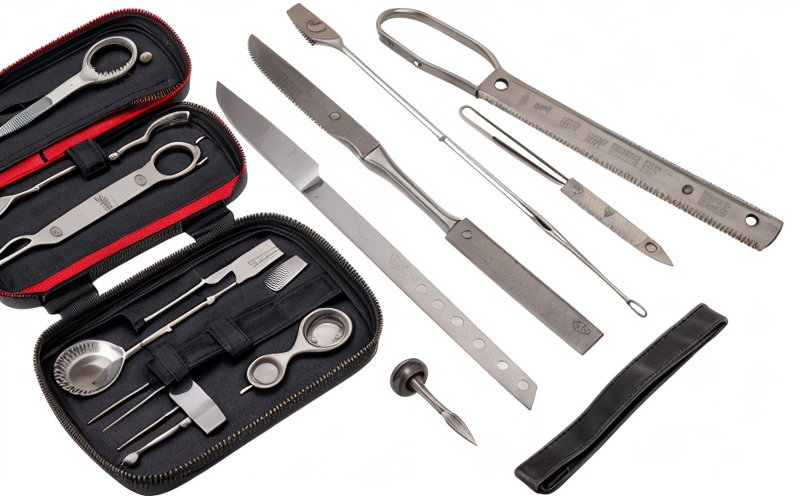ISO 7741 Needle Holder Grip Retention Testing
The ISO 7741 standard is specifically designed to ensure that needle holders used in surgical instruments and tools maintain a consistent grip on needles throughout the course of their intended use. This testing is critical for ensuring patient safety, as compromised grip can lead to complications such as needle dislodgment or improper function during surgery.
The test procedure outlined in ISO 7741 involves subjecting the needle holder to various loads and measurements over a specified period. The primary focus of this testing is on the retention force and friction between the needle and the holder, ensuring that the grip remains stable under typical usage conditions. This process helps identify any potential issues with design or manufacturing that could affect the integrity of the grip.
For surgical instruments where precision and stability are paramount, such as laparoscopic tools or arthroscopic equipment, ISO 7741 compliance is essential. The test setup typically includes a specialized fixture designed to replicate the forces encountered during actual use. Specimens prepared according to the standard specifications ensure that the testing reflects real-world conditions accurately.
Compliance with this international standard not only ensures product quality but also facilitates market access in countries that mandate such standards for medical devices. This includes numerous regulatory bodies worldwide, ensuring that manufacturers meet global safety and performance criteria.
The test results are reported based on the retention force measured at various points during the testing cycle. These reports serve as a critical tool for quality assurance teams, R&D engineers, and compliance officers to identify areas for improvement in design or manufacturing processes. Additionally, they provide data that supports claims of product reliability and safety.
In summary, ISO 7741 Needle Holder Grip Retention Testing is an essential process in the development and quality control of surgical instruments. By adhering to this standard, manufacturers can ensure their products meet stringent international requirements, enhancing patient safety and compliance with global regulations.
Applied Standards
The ISO 7741 standard is part of a broader framework for ensuring the reliability and performance of surgical instruments. It aligns closely with other international standards such as ISO 10993, which focuses on biocompatibility testing, and ISO 13485, which governs quality management systems in medical device manufacturing.
These standards collectively form a comprehensive approach to ensuring that surgical instruments meet the highest levels of safety, performance, and regulatory compliance. Compliance with these standards is crucial for manufacturers looking to enter international markets or gain certification from recognized bodies.
International Acceptance and Recognition
- Australia: The Australian Standard AS ISO 7741 is widely accepted in Australia, ensuring that medical devices comply with international standards.
- New Zealand: New Zealand aligns its regulations with the International Organization for Standardization (ISO), making compliance with ISO 7741 a priority.
- European Union: The European Medical Device Directive (MDD) and subsequent conformity assessment procedures recognize ISO standards, including ISO 7741.
- United States: While not mandatory for all devices, compliance with ISO standards like ISO 7741 is highly recommended by the FDA to ensure product safety and efficacy.
Use Cases and Application Examples
The ISO 7741 Needle Holder Grip Retention Testing has direct applications in various surgical procedures where precision is critical. For instance, laparoscopic surgeries require instruments that can maintain a secure grip on needles without slippage or dislodgment. This testing ensures that the needle holder performs reliably under stress, which is essential for minimizing risks during delicate operations.
Another application involves arthroscopic surgery, where small incisions are made and precise manipulation of tools is necessary. The test parameters in ISO 7741 help manufacturers design instruments that can withstand the forces exerted without compromising grip stability. This ensures that surgeons have reliable equipment, reducing the chances of complications during procedures.
Additionally, compliance with this standard is crucial for manufacturers aiming to export their products internationally. Many countries have adopted ISO standards as part of their regulatory framework, and adherence to these standards can facilitate smoother market entry and reduce barriers to international trade.





